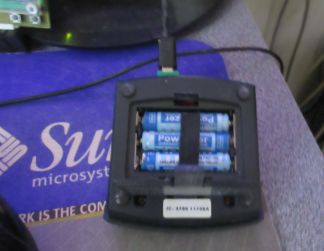
The power in my apartment used to be very reliable, but things have deteriorated in the last 10 years or so. I have experienced serval power outage and some up to 6-7 days.
The Supercap I have is only good for a few minutes as the STM8 clock uses around 2mA to keep its firmware RTC working at the minimal state. It requires a minimum of 3V, so Li coin cells are out. I don't quite trust Li-ion batteries enough to be trickle charge 24/7.
I use some old NiMH batteries. They lost most of their capacity, but they are still good for a few mA load. They are sitting in a compartment at the bottom of the clock, so gravity would protect the electronics from any leaks.
Here is a battery backup for the digital clock. +5V is the power source (e.g. USB) that can go away and +UB is the backup rail.

From Reddit:
Can you replace a Ni-Cd backup battery by NiMH in a Tandy TRS-80 model 100?
>So, NiCd's are super easy to charge. You just throw current into them at about 0.1C, and once they're full, they turn the rest into heat. Harmlessly, and forever. You can just slowly overcharge NiCd and it's fine with that. Lots of old two-way battery cradles did just that, and it's why the radios were always warm when you picked them up.
>Do that to NiMH, and they "vent". NiMH needs charge termination, or needs to be floated at a lower voltage so it never gets quite "full". Right around 1.35 volts per cell seems happy.
------------------------------------------------------------------------------------
You'll notice it a bit funny as the LTC4054ES5 is a Li-ion charger chip and I am using it for NiMH. It turns out that 3 NiMH has just around the same charge voltage as Li-ion battery.
The -ES5 part has a recharge threshold of -150mV, so it would starts charging the batteries when they drop to 1.35V each. It charges the cells at 50mA to about 1.4V and stop charging when the charge current is below 5mA. (The minimum charging current for this chip is 50mA.) The actual cell voltages can be reached is slightly below 1.40V because of I*R drops due to their internal resistances.
I use a P-MOSFET (Q1) as a switch for the back up rail to reduce the voltage drop vs a Schottky diode.
This has been working for close to half a year now without any leaks. It also survived a 24+ hour of back out with plenty of juice left.
 K.C. Lee
K.C. Lee
Discussions
Become a Hackaday.io Member
Create an account to leave a comment. Already have an account? Log In.